What is the difference between a split-leaf philodendron and a monstera? The answer, to be honest, is very confusing! Today I’m going to share everything you need to know about philodendrons and monsteras.
Due to their rise in popularity, thanks to social media, more people are looking to own a monstera plant.
Are they the same plant? This is where it gets confusing. A split-leaf philodendron is a common name for the Monstera deliciosa. So yes, those are names for the same plant.
But Monstera deliciosa is not actually a philodendron! So while a split-leaf philodendron is a type of monstera, a monstera is not part of the philodendron family.
Monstera is simply the genus name for a group of plants, while the split-leaf philodendron is a specific variety of monstera (the monstera deliciosa).
Let’s take a closer look at the split leaf philodendron as well as the genus known as monstera.
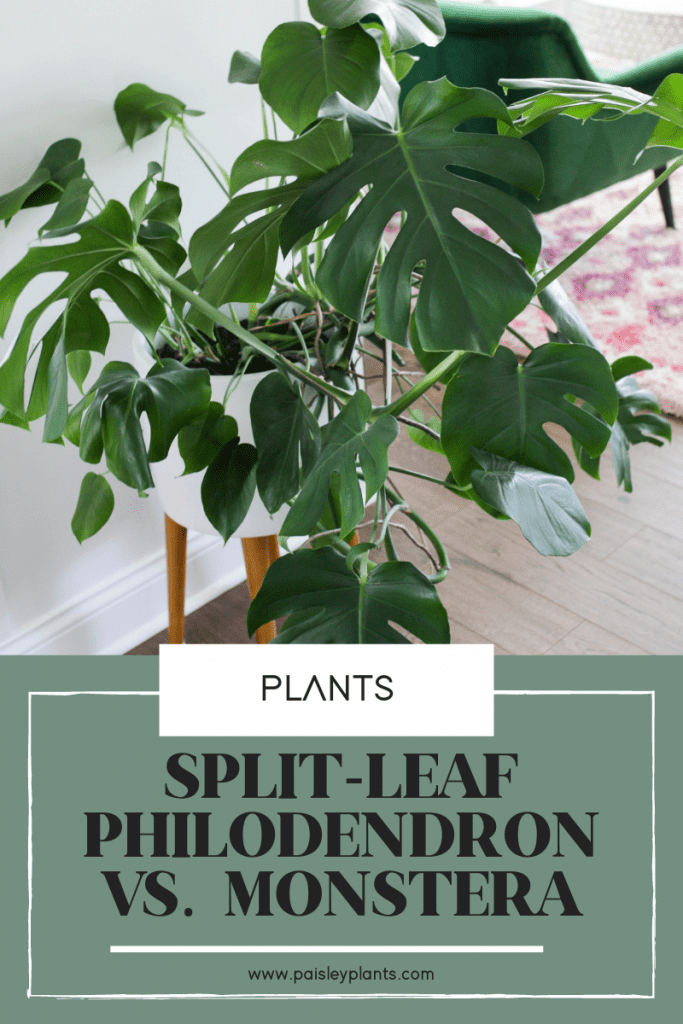
Table of Contents
What is a Monstera?
The word “monstera” refers to the genus Monstera, which is a group of plants that are native to the tropical areas of the Americas. Monstera is named after the Latin word, which roughly translates to “abnormal.”
The “abnormal” comes from the unique holes and deep cuts that naturally form in the leaves of most monstera plants, which is one of the defining attributes to the Monstera genus.
What is a Philodendron?
Let’s review what a Philodendron is! A Philodendron is also a popular plant found in many homes today. This is a vine plant similar to a pothos. It’s a tropical plant with its natural habitat in the tropical rainforest of the West Indies.
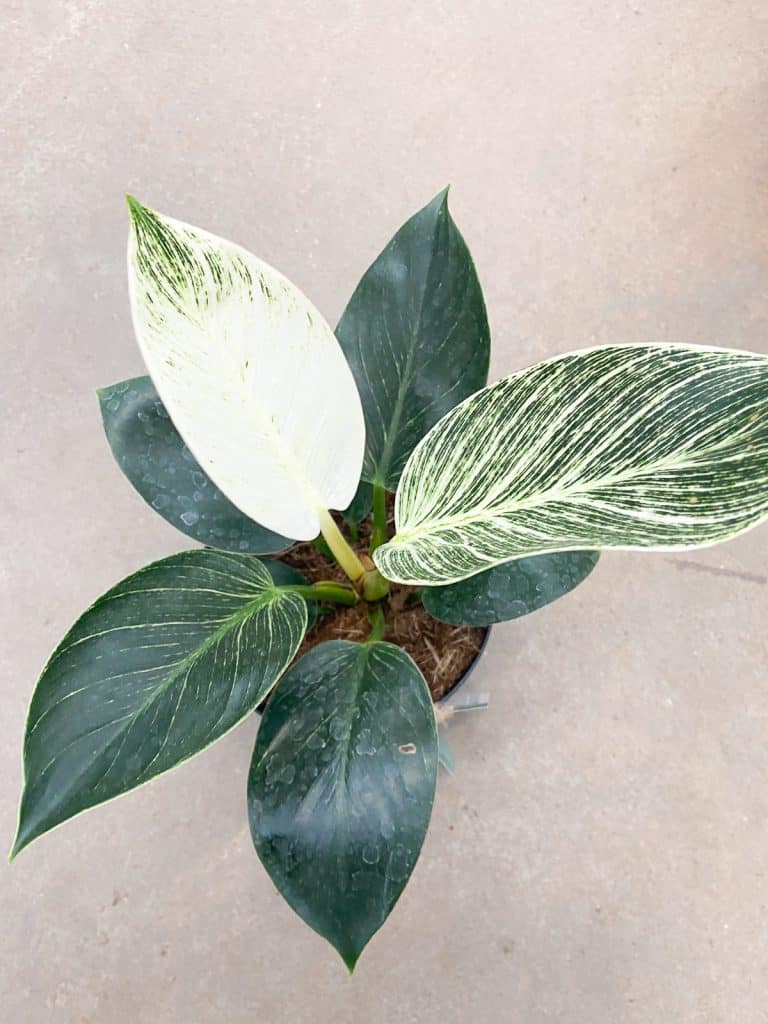
Philodendron leaves are green, heart-shaped, and have smooth surfaces, and it produces flowers and aerial roots like the monstera plant. Its distinguishing feature would have to be its length – the philodendron plant can grow up to six feet long!
There are also many species of philodendron including the heartleaf philodendron, tree philodendron (philodendron selloum) and lacy tree philodendron (Thaumatophyllum bipinnatifidum).
Another thing to note, “split-leaf philodendron” can actually refer to two different plants — one an actual philodendron and one a monstera.
A split-leaf philodendron is the common name for both a Thaumatophyllum bipinnatifidum, which is a true philodendron, and a monstera deliciosa, which is not a philodendron.
Told you it was confusing!
Main Differences Between a Philodendron vs Monstera
Leaves
Some of the most significant differences lie in the leaves. Philodendrons have smaller leaves than the monstera. Philodenrons also have split leaves while monsteras are fenestrated.
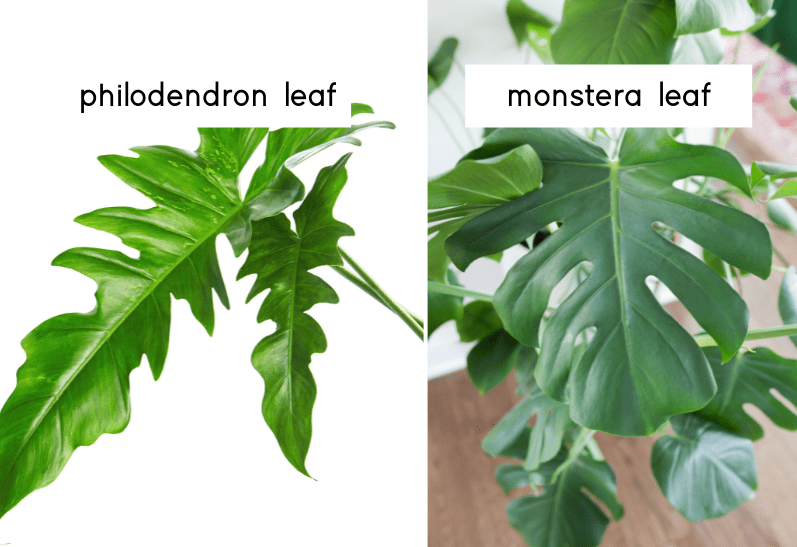
This basically means that the philodendron plant has deep cuts that make the leaves look like fingers while the monstera has holes or transparent areas in it. Philodendrons leaf shape are usually more feather shaped while the monstera is more heart shaped.
Stem
Monsteras stems are much thinner while the stems of the Philodendron are much more woody.
Size
The size of the two plants are also different. Monsteras can grow massively tall while philodendrons are small in comparison.
Popular Examples of Monsteras
The monstera genus is home to 48 different species of monstera. These monstera species all vary in rareness, size, color, etc. As a matter of fact, one species of monstera is so rare, it has only been seen in the wild 17 times: the Monstera obliqua.
Monsteras are a unique member of the plant world, and their never-ending beauty should be appreciated. Here are some different plants of the most common monstera species you might find when shopping for plants.
Monstera Variegata
These monstera members are technically no different than your run-of-the-mill monstera deliciosa. However, due to their unique variegation, they are classified into their own separate species.
The monstera variegata looks like a typical monstera, but is splashed with white variegations all over its leaves. Because of this variegation, the monstera variegata is more rare and more expensive than the deliciosa.
Monstera Adansonii
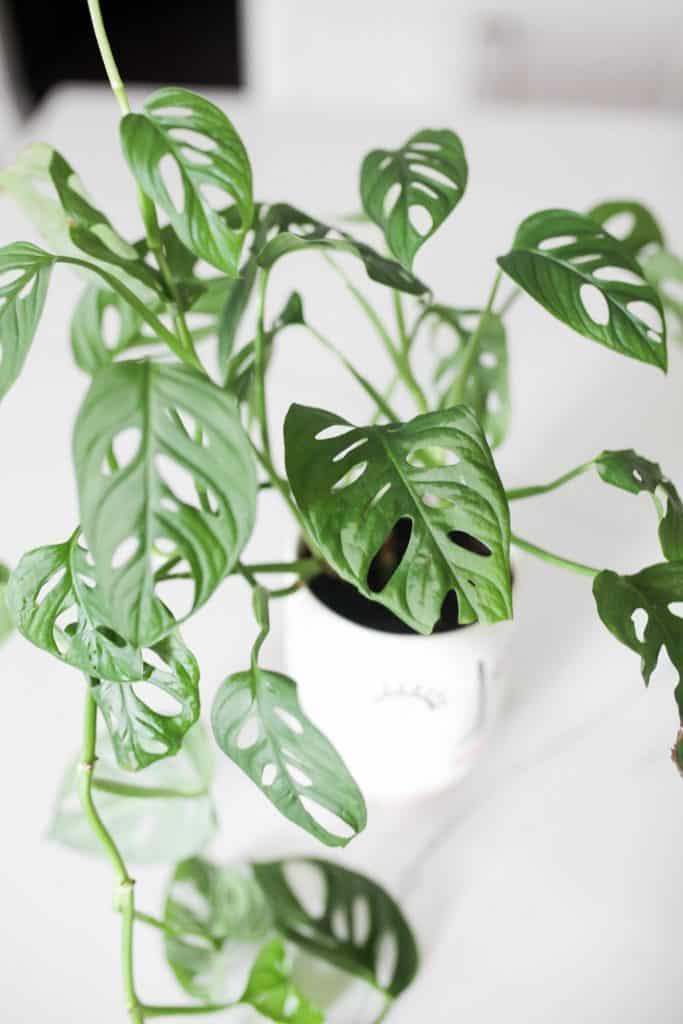
For owners who love the look of a monstera, but don’t have the room to house such a massive plant, the monstera adansonii offers a smaller alternative.
This smaller monstera works well in a hanging planter, as the leaves grow on long vines. One main difference between the Adansonii and the Dilciosa is the leaf size. The Adansonii has smaller leaves than the Deliciosa.
The holes of the adansonii are quite large, taking up 50% of the leaf. Oftentimes, nursery owners will try and market the adansonii as a “monstera obliqua;” this is simply false advertising. As we’ve mentioned previously, the obliqua is extremely rare.
*Find Adansonii care instructions here.
Monstera Dubia
Unlike most other species of monstera, the monstera dubia does not have holes in their leaves. This smaller, vining plant grows heart-shaped leaves that are adorned with a beautiful dark and light green coloration.
These are one of the rarer commercial monsteras that you’ll find in stores.
“Mini Monstera” (Rhaphidophora Tetrasperma)
This one is a bit of a cheat, but it’s important to clear the air with this. Despite its name and its uncanny resemblance, the “mini monstera” is not a monstera at all!
This doppelgänger of the monstera deliciosa offers a smaller, more affordable alternative to the real deal.
What is a Split-Leaf Philodendron (otherwise known as a Monstera Deliciosa)?
Without further ado, the monstera Deliciosa! It’s common name is the split-leaf philodendron or the Swiss cheese plant.
This is easily the most identifiable member of the monstera genus (which is part of the araceae family) out there and a very popular houseplant. It’s safe to assume that when someone is talking about a “monstera,” they’re referring to the split-leaf.
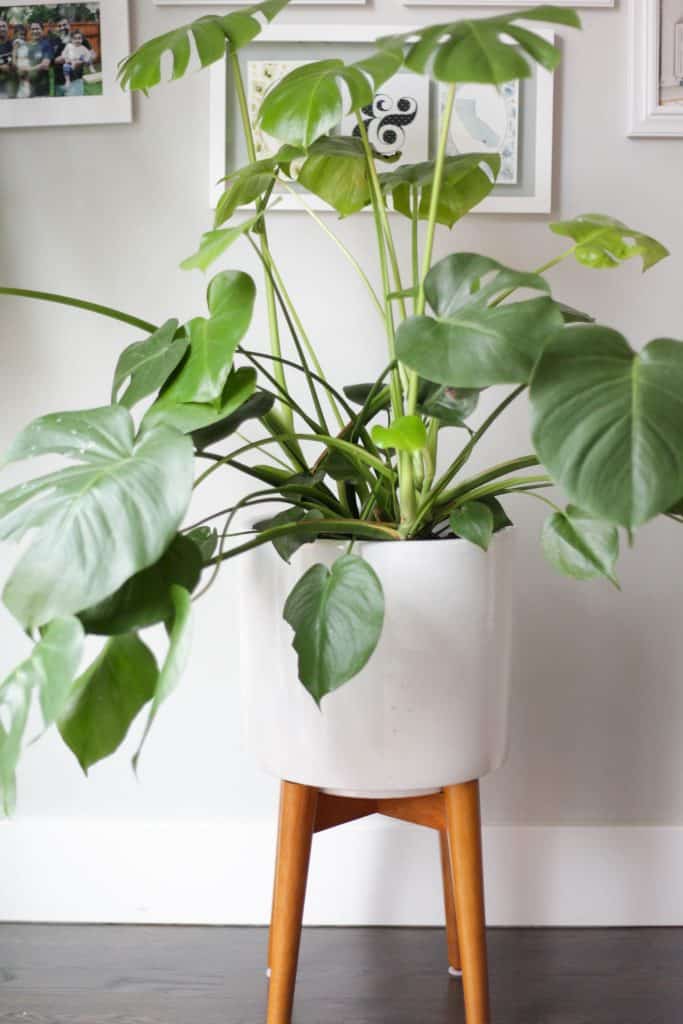
Native to Central America, this tropical evergreen is identifiable by its massive size, its deep green hue, and most importantly, the large leaves that are riddled with holes.
When grown as indoor plants, the split-leaf philodendron can be grown to a more manageable size, but growing it outdoors allow the plant to reach its full potential.
At maturity, a split-leaf in it’s natural habitat can grow to become a whopping 70 feet tall. An indoor monstera deliciosa grows to only a fraction that height, around 3 or 4 feet tall.
The deliciosa grows long aerial roots that attach themselves to tree trunks and branches, and will root underground if it touches soil; this allows wild deliciosas to reach such massive heights.
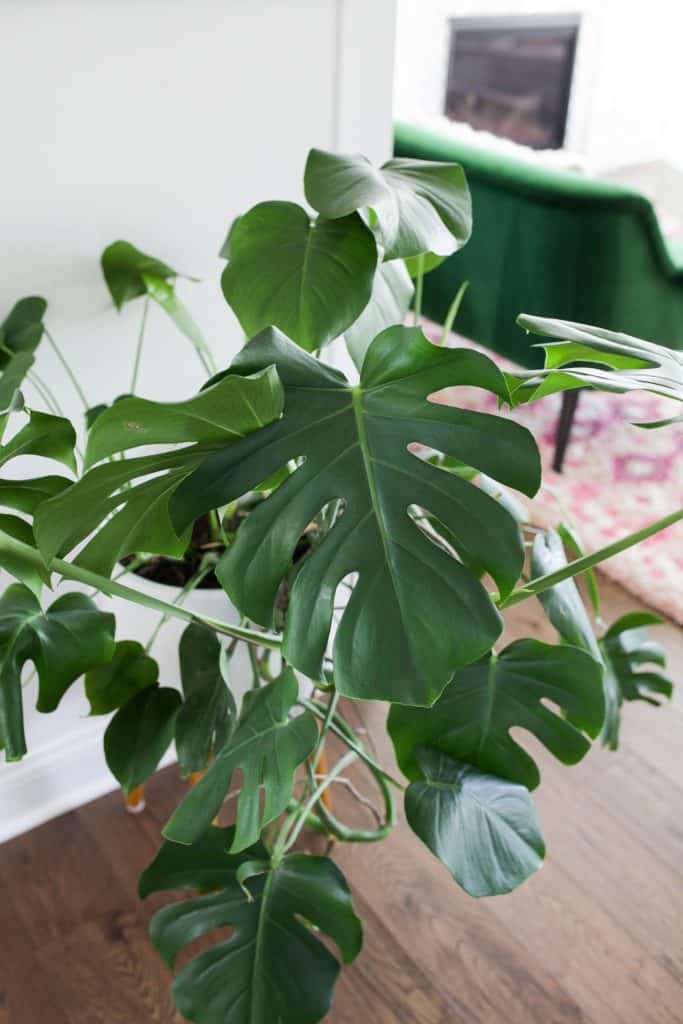
When grown in the wild, the split-leaf philodendron also produces an edible fruit, known as the Mexican breadfruit. The Mexican breadfruit is a green, scaly, corn-shaped fruit; it is revered for its delicious flavor, which is often compared to that of mango or pineapple.
While the split-leaf philodendron truly is a monster of the tropics, you too can own one in the comfort of your home. Here are some tips on how to care for a split-leaf philodendron.
Basic Monstera Deliciosa Care
In case you want to bring a split-leaf philodendron, aka a monstera deliciosa into your home, here’s how to care for it!
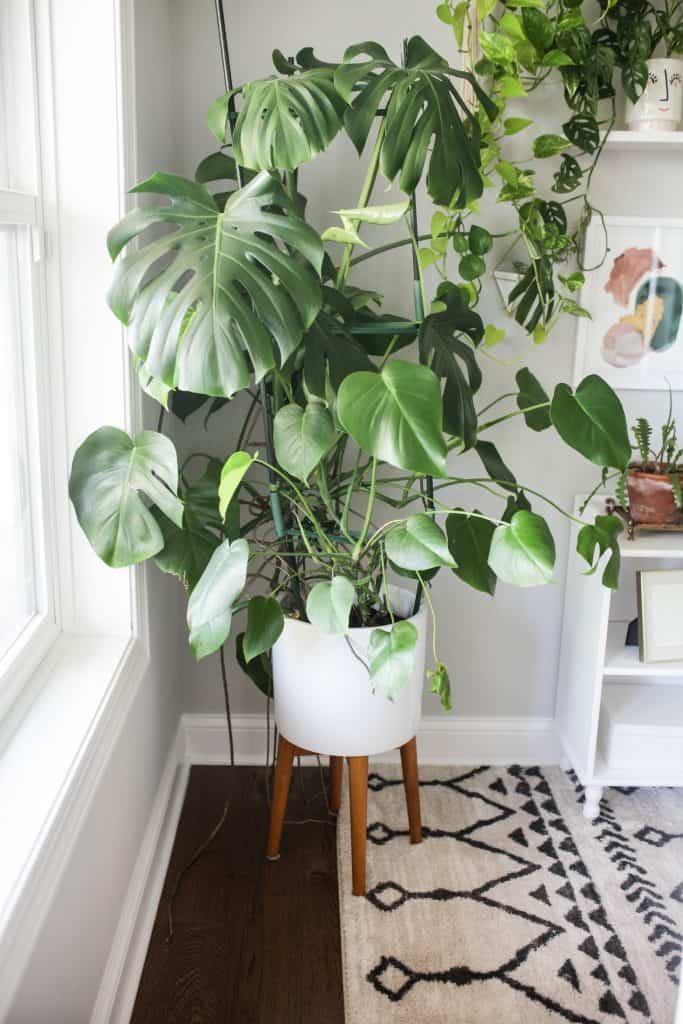
Sun & Light
The split-leaf philodendron prefers to sit in bright, indirect light. Please refrain from allowing your monstera to sit in direct sunlight. Too much direct light can cause the plant’s leaves to burn.
Also, the more bright light it has the less holes it will have. Part of the reason why these plants have holes is to allow light and rain to get the bottom leaves (when it is in its native habitat).
If the entire plant is getting full sun it will have less of a need to produce holes!

Water
The split-leaf philodendron benefits greatly from regular waterings. Give your plant a deep watering; allow the water to pour out from the drainage holes at the bottom.
Doing so will indicate that every layer of soil has been properly watered. Allow the soil to dry out before watering it again.
Soil
Select a soil that is peat-based, which aids in retaining moisture and keeping your monstera well-fed. The ideal pH range for a monstera is something that is neutral to acidic.
Fertilizer
During the growing season (spring & summer), treat your split-leaf philodendron with a balanced fertilizer. You should aim for an NPK ratio of 20-20-20.
Dilute half a teaspoon of the fertilizer with a gallon of water. This should be done every three weeks. Please note: do not water your monstera further after applying fertilizer; wait for the soil to dry before watering as normal.
Temperature & Humidity
As a tropical plant, the split-leaf philodendron loves to live in warm climates with high humidity. As the plant, owner, you should ensure that the home temperature never dips below 65° F. The ideal range for a home-grown monstera is between 65° and 75° F.
Keeping your monstera humid is another key part of caring for this plant. Regularly misting your monstera’s foliage with collected rainwater will keep your split-leaf very happy. In addition, many plant owners use an air humidifier to increase the humidity levels in their homes.
Choosing a Container & Repotting
While an indoor split-leaf philodendron won’t grow nearly as large as its wild counterparts, you should still plan to be housing a plant that can potentially grow to 4 feet tall. When you first bring your monstera home from the garden center, measure out the root ball.
Your container should be 2 inches larger than the root ball to allow for proper growth. In addition, the container you house this plant in must have drainage holes.
Having drainage holes greatly reduces the chance that your plant will fall prey to bacterial diseases such as root rot. Moving forward, you should always size up your plant pot by 2 inches when repotting your split-leaf philodendron.
Pruning
Pruning your split-leaf philodendron is an important (yet vastly overlooked) part of plant upkeep. To maintain the size of your plant, as well as encourage healthy growth, you absolutely should include pruning as part of your plant’s basic care.
Always make sure to use a sharp pair of scissors that have been sterilized. Simply dipping your shears in isopropyl alcohol will be enough to clean them.
Trim off any foliage that appears to be dead or damaged first. By removing these unnecessary pieces of foliage, you’re redirecting your plant’s energy towards creating new growth, rather than trying to revive dead leaves.
You might also notice aerial roots beginning to grow out from the edge of your plant’s container. Simply trim these extra aerial roots to prevent them from becoming unruly.
Which Plant Should I Buy?
It’s definitely a hard call to make! The monstera genus boasts a multitude of beautiful, diverse species of plants. The split-leaf philodendron is a classic member of the monsteras, and caring for it is very straightforward.
However, some homeowners might feel hesitant to want to house a large plant such as the split-leaf. If you feel like that’s the case, then you might want a smaller monstera, such as the monstera adansonii. Choosing a new addition always requires careful consideration- after all, a plant is a living thing that requires care!
In Conclusion
I hope this article has cleared the air in some way about the difference (or lack thereof) between the split-leaf philodendron vs monstera. I think we can all agree that the monsteras are one of the most fascinating members of the plant world.
With so many species to choose from, it’s really hard to decide which one to own. No matter what, these tropical mammoths always have a place in our hearts, even when they can’t fit into our homes.
If you want more monstera fun, head here for a full step by step tutorial on how to propagate a monstera!

